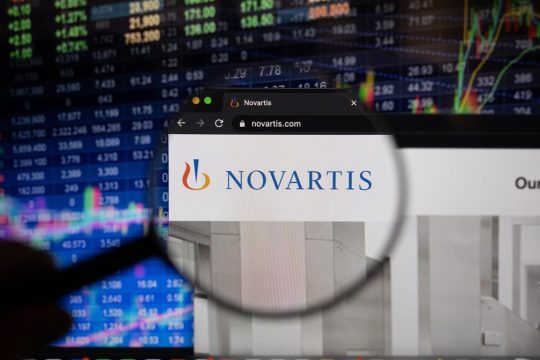Advertisment
Ireland and US E-Cig poisoning on the rise
‘The jury is still out on e-cigarettes. They are likely to prove less harmful than tobacco, however they can potentially become a gateway drug to smoking tobacco, due to the commonality of the nicotine addiction. The investment by the tobacco industry in the marketing and development of e-cigarettes is of concern, as they will have little interest in their potential for cessation; but entirely in their potential for profit’. Dr Ross Morgan, Chairperson, ASH Ireland.
Poisonings from electronic cigarettes and their nicotine liquid have increased dramatically.
In the US calls to poison control centres for e-cigarette exposures rose from one per month when monitoring started in September 2010 to 215 per month as of February 2014, Kevin Chatham-Stephens, MD, of the CDC in Atlanta, and colleagues found.
E-cigarettes now account for nearly 42% of all cigarette-related calls, the group reported in the April 4 issue of Morbidity and Mortality Weekly Report.
More than half of the calls related to the nicotine-vaporizing devices reported negative health effects, a higher proportion than with calls related to conventional cigarettes (58% versus 36%, P<0.001).
The most common adverse health effects cited during those calls were vomiting, nausea, and eye irritation, but also included one suicide death from intravenous injection of nicotine liquid.
“Given the rapid increase in e-cigarette-related exposures, of which 51.1% were among young children, developing strategies to monitor and prevent future poisonings is critical,” the investigators wrote, calling it an “emerging public health concern.”
Use by kids has been a concern, as one analysis of e-cigarette refill liquids noted that nicotine content levels high enough to be fatal to children were common.
In Ireland in 2012, the National Poisons Information Centre of Ireland (NPIC) received only 1 call about e-cigarettes (0.1 call per 1000 calls); a child (>12 years) who was symptomatic. In 2013, the number increased and NPIC received 9 calls about e-cigarettes (0.9 call per 1000 calls); 7 calls were regarding children, 2 who were symptomatic and 2 calls were adults, 1 who was symptomatic. The trend continued this year in 2014 up until 31st March, NPIC received 9 calls about e-cigarettes (3.8 calls per 1000 calls); 4 calls were regarding children, 3 were symptomatic; 4 calls were regarding adults, 3 of whom were symptomatic and 1 call was about a dog which was symptomatic.
‘The jury is still out on e-cigarettes. They are likely to prove less harmful than tobacco, however they can potentially become a gateway drug to smoking tobacco, due to the commonality of the nicotine addiction. The investment by the tobacco industry in the marketing and development of e-cigarettes is of concern, as they will have little interest in their potential for cessation; but entirely in their potential for profit’. Dr Ross Morgan, Chairperson, ASH Ireland.
“The e-cigarette industry specifically targets children and teens with appealing flavors like cotton candy and gummy bear, and neither these products nor their liquid nicotine refills are currently regulated by the federal government,” American Academy of Pediatrics president James M. Perrin, MD, pointed out in a statement sent to reporters.
“The CDC’s latest study on e-cigarettes is in one word — disturbing,” according to a statement from American Heart Association CEO Nancy Brown. “New data such as this cry out for Food and Drug Administration oversight of these products.”
The pediatrics association agreed and added, “Toxic household products are required to have child-proof packaging; poisonous liquid nicotine should be no different.”
With such an unregulated marketplace for e-cigarettes and e-cigarette liquid allowing child-friendly flavors, such problems are almost inevitable, suggested Miguel Martin, president of e-cigarette company Logic.
His company and a few others make sealed, single-use e-cigarettes that don’t involve refill vials and thus may lower the risk of ingestion by children, Martin said:.
“We would encourage the FDA or CDC to have a full comprehensive scientific panel” on harm, he said. “We encourage the FDA to play hard in this space.”
The CDC study examined poison control center calls after September 2010, when codes were added specifically to capture e-cigarette calls.
Through February 2014, the centers nationwide received a total of 2,405 calls related to human exposure to e-cigarettes.
For comparison, there were 16,248 calls related to conventional tobacco cigarettes, excluding cigarette butts. The number of these calls ranged from 301 to 512 per month.
When the two were combined, e-cigarettes accounted for an increasing proportion of calls, rising from 0.3% in September 2010 to 41.7% in February 2014.
More of the e-cigarette exposure calls came from healthcare facilities (12.8% versus 5.9% with conventional cigarettes, P<0.001).
Half of e-cigarette exposures were in kids ages 5 years and younger, and the bulk of the rest were in adults over age 20, whereas 95% of exposures to conventional cigarettes were in kids 5 and under.
E-cigarette exposure was also significantly more likely than conventional cigarette exposure to be due to inhalation (16.8% versus 2.0%), eye exposure (8.5% versus 0.1%), or skin exposure (5.9% versus 0.1%) and less likely to be due to ingestion (68.9% versus 97.8%).
Reference:





